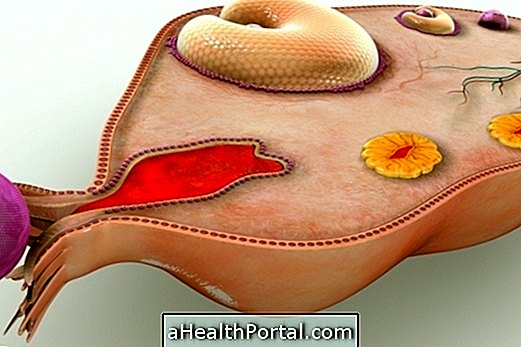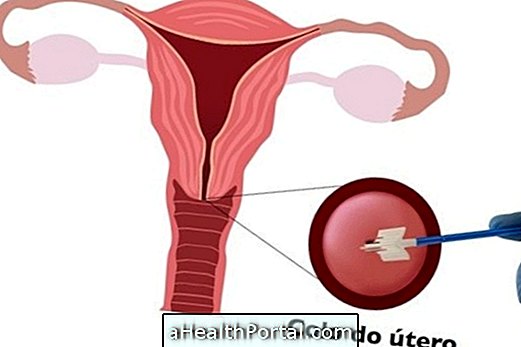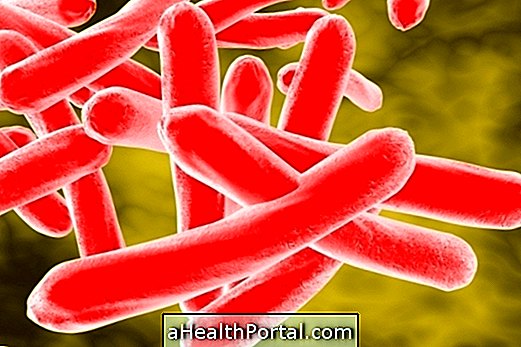The progestogen test is done to check the levels of hormones produced by women when they do not have normal menstrual periods and to assess the integrity of the uterus because the progestogen is a hormone that promotes changes in the endometrium and maintains pregnancy.
The progestogen test is made from the administration of progestogens, which are hormones that prevent the production of sex hormones estrogen and progesterone for seven days. After the administration period is checked whether there was bleeding or not. If there is bleeding it means that the woman has the intact uterus and normal levels of estrogens. If there is no bleeding, another test should be performed to check for other causes of lack of ovulation, such as the Asherman Syndrome, where the woman has adhesions in the uterus, which often prevents menstrual blood from being released.
This test is widely used in the investigation of secondary amenorrhea, which is a condition in which the woman stops menstruating for three cycles or six months, and may be due to pregnancy, menopause, contraceptive use, physical or emotional stress and frequent strenuous physical exercises . Learn more about secondary amenorrhea and its main causes.

When to do
The progestogen test is indicated when the woman has any of the following factors:
- Absence of menstruation;
- History of spontaneous abortion;
- Signs of pregnancy;
- Fast weight loss;
- Use of contraceptives;
- Premature menopause.
The test is also indicated for women who have polycystic ovarian syndrome, where various cysts appear inside the ovary that can interfere with the ovulation process, making pregnancy more difficult. Understand more about this syndrome.
How is done
The test is performed with the administration of 10 mg of medroxyprogesterone acetate for seven days. This medicine acts as a contraceptive, that is, it prevents the secretion of the hormones responsible for ovulation and decreases the thickness of the endometrium, without menstruation. Thus, at the end of the use of the medicine, the egg can go to the uterus to be fertilized. If there is no fertilization, bleeding will occur, characterizing menstruation and the test is said to be positive.
If the result of this test is negative, that is, if there is no bleeding, another test should be performed to check for other possible causes of secondary amenorrhea. This test is called the estrogen and progestogen test and is done with the administration of 1.25 mg of estrogen for 21 days with the addition of 10 mg of medroxyprogesterone acetate in the last 10 days. After this period it is checked whether or not bleeding has occurred.
What does the result mean?
The progestogen test is done under medical guidance and may have two results according to the characteristics that the woman may present after the use of medroxyprogesterone acetate.
Positive test
The positive test is one in which bleeding occurs after five to seven days of use of medroxyprogesterone acetate. This bleeding indicates that the woman has the normal uterus and that her estrogen levels are normal too. This can mean that the woman spends a lot of time without ovulating because of some other situation, such as polycystic ovarian syndrome or hormonal changes involving the thyroid, adrenal gland or hormone prolactin, and the doctor should investigate.
Negative test
The test is considered negative when no bleeding occurs after five to seven days. The absence of bleeding (negative test) may indicate that the woman has Asherman's syndrome, where there are several scars in the uterus, which causes excess of endometrial tissue. This excess allows adhesions to form inside the uterus, which prevents the menstrual blood from being released and can be painful for the woman. Asherman's syndrome is usually associated with abortion and infertility.
With this, the physician is asked to use 1.25 mg of estrogen for 21 days with the addition of 10 mg of medroxyprogesterone acetate in the last 10 days. If there is bleeding after the use of the medicine (positive test), it means that the woman has the normal endometrial cavity and that estrogen levels are low. Thus, it is indicated to perform the dosage of the hormones that stimulate the production of estrogen and progesterone, which are the hormones luteinizing, LH, and follicle stimulating, FSH, to know the real cause of the absence of menstruation and start the appropriate treatment. Learn more about female hormones.
What's the difference for the progesterone test?
Unlike the progestogen test, the progesterone test is done to check circulating progesterone levels in the blood. It is usually requested in cases of risky pregnancy, difficulty getting pregnant and irregular menstruation. Learn more about the progesterone test.





















